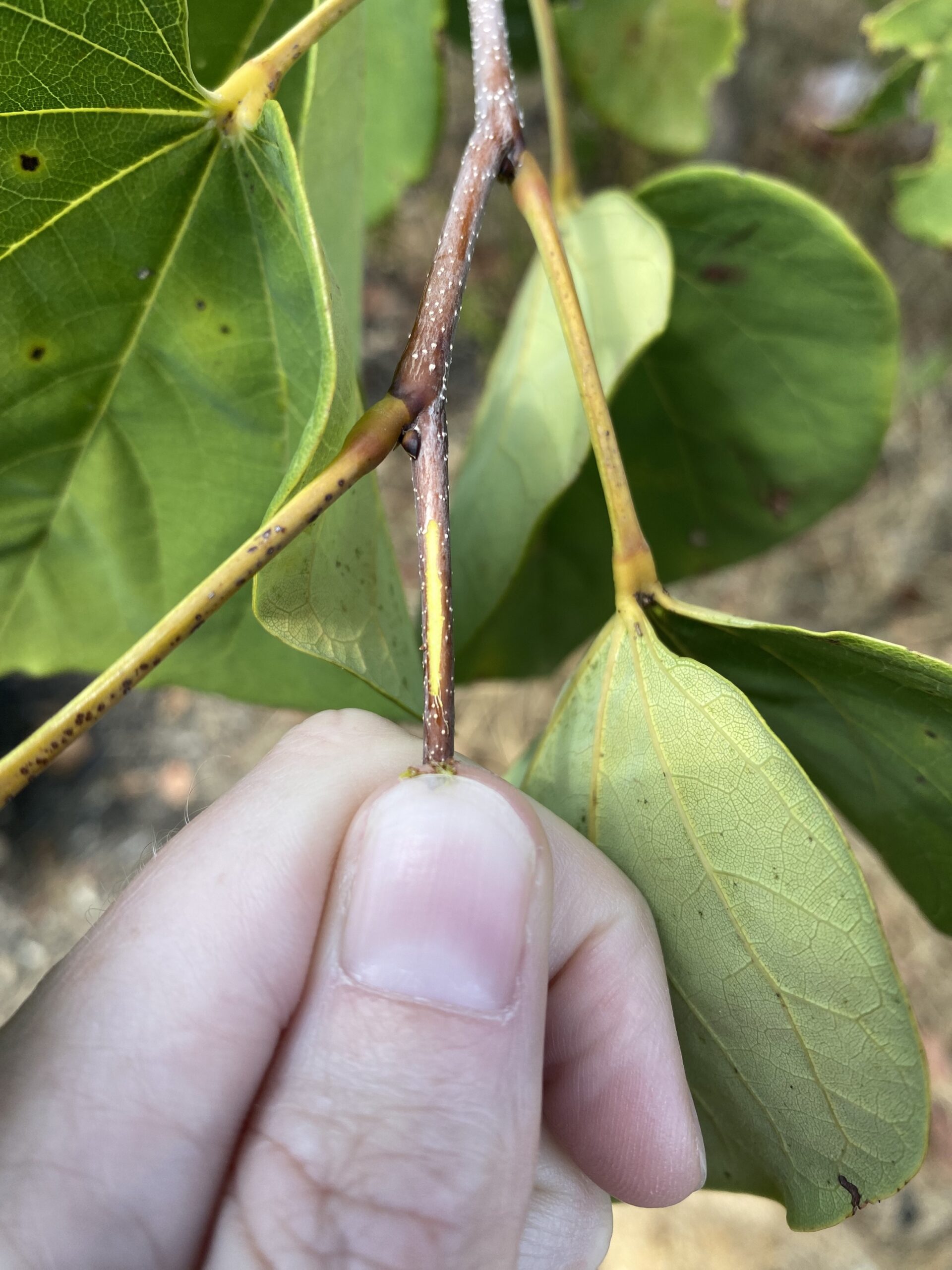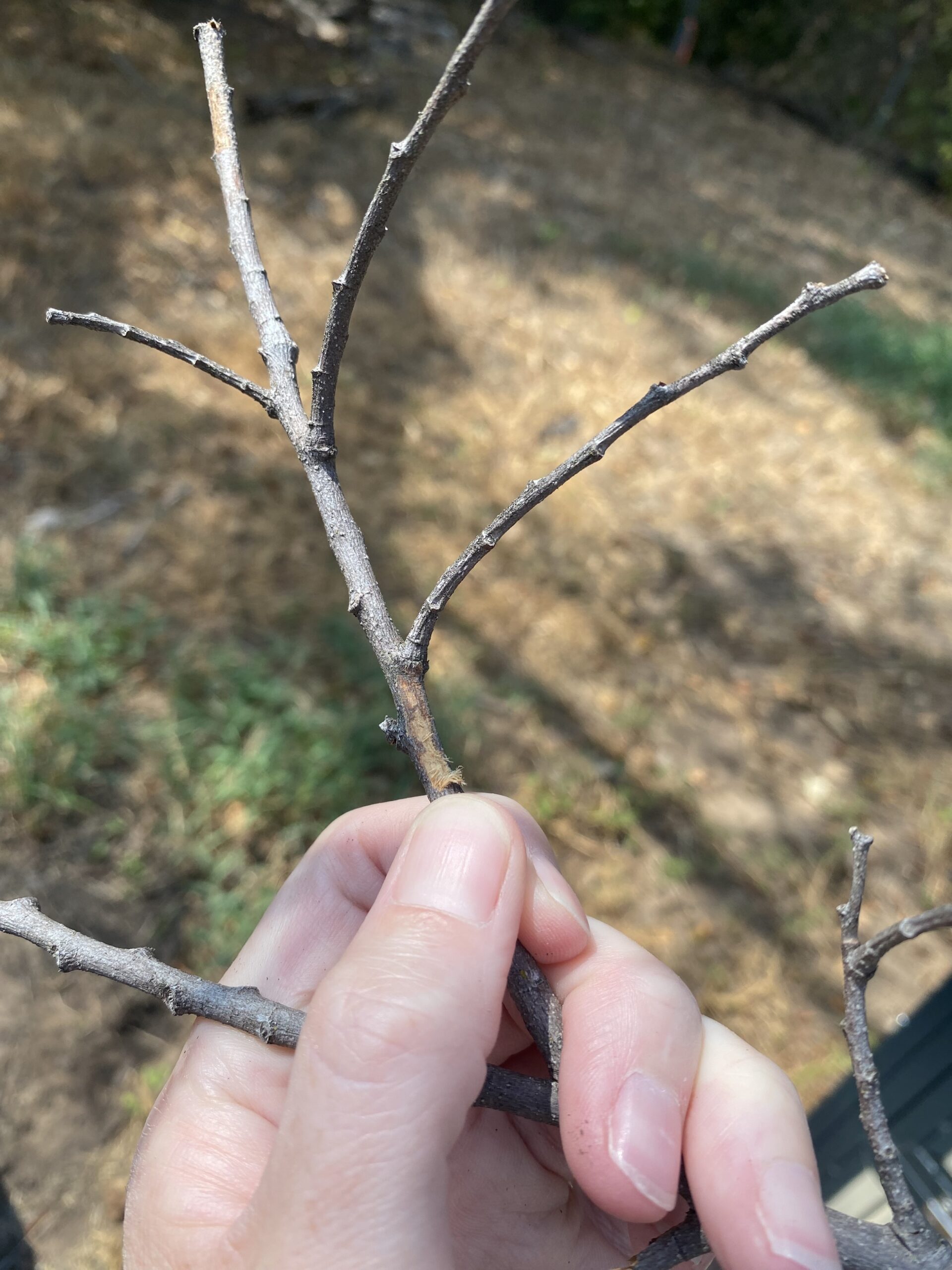By: Rachel McGregor, Urban Forestry Manager
What are symptoms of heat stress in trees?
Symptoms of heat stress include leaf drop, burnt leaf tips, brown leaves, and wilting of leaves.
How do you know if your tree is alive or dead?
Do not assume just because the leaves fell off the tree it is dead. Healthy trees can handle defoliation due to drought and still re-foliate. Twig tips should be pliable and still somewhat green when you scratch away the bark.
When should I call a certified arborist
When in doubt, call a certified arborist. You can visit treesaregood.org or isatexas.com to find a certified Texas arborist near you.
What is happening internally in the tree under heat stress?
Stomata start to close, photosynthesis is reduced or shut down, but the tree is still alive and respiring using stored carbs/sugars to survive while no new carbs are being produced because photosynthesis is compromised. Also, high night time temperatures severely stress plants, defensive mechanisms are triggered with sunlight, but at night with no sunlight the proteins are not produced, and the plant can become more susceptible to heat stress.
What can I do for my tree under heat stress?
Use a soaker hose to supplementally water your tree. The symptoms of stress may not go away, and trees may be stressed from this for several years which makes them more susceptible to secondary stressors like borers and hypoxylon canker. Follow best management practices for trees to provide supplemental water and mulching. Avoid pruning oaks from Feb 1 to the end of June to reduce the risk for oak wilt. Limit tree pruning during stressful times unless a hazard exists.


